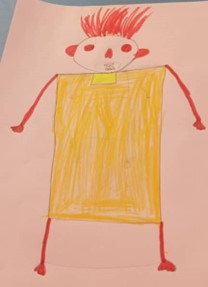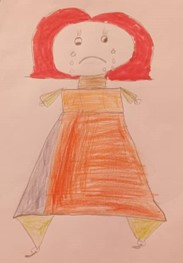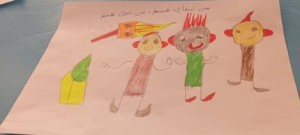by admin
Share
Share

It was a busy afternoon, and the counselor was reviewing client files. A woman entered the room with a girl who appeared to be in first grade. The mother said to the counselor, “Doctor, my little girl [daughter] is in first grade. She’s real quiet and keeps to herself, doesn’t talk to the other kids much at all. Her teacher says when she goes up to answer a question in front of the class, her whole-body shakes, and she bites her nails. I’m worried she might be scared of being around other kids. Can you talk to her about it?”
The counselor met the girl and asked her to draw. She drew a picture of a lonely and sad girl. In the first session, after talking with her, the counselor asked her mother to come to the office in the next session.
Mother had a lot to say. She said: “My daughter was witness of suicide attack twice, but she was not physically harmed. But she is very mentally damaged. She has been bedwetting for two years, and although I have taken her to the doctor, she has not yet recovered. Sometimes she has nightmares and is afraid of the dark.” Whenever the electricity goes out, she hides in a corner, pulls the blanket over her head and cries or screams. No matter how much I ask what happened, she doesn’t say anything and just cries.

Figure 11 Her First drawing. (A lonely and sad girl)
Between 2022 and 2023, my daughter was very smart and did very well in preparatory classes. But now her memory is weak. For example, if I tell her to bring potatoes, she goes to the kitchen and comes back empty-handed and asks: “Mom, what did you say? Her behavior worries me a lot. Sometimes I tell myself that maybe it’s not a problem, she’s still a kid and she’s playing. Another problem with my daughter is that she is very imaginative. She has many imaginary friends and always plays with them. A few days ago, I saw her line up her dimples in a corner of her room and teach them. She also played the role of a teacher. It was as if there was another person that I didn’t see, because my daughter was telling her stories and asking, “My students are doing very well in their lessons. I should work with them more. What do you think?”
In the third meeting, the counselor again talked to the girl and asked her to draw a picture. This time the drawing was different. She had two fiery eyes.
The fiery eye was the name of the monster that the girl imagined in the dark. This monster had caused her to be afraid of the dark and to seek refuge in her imaginary fighter friends to save herself.
Her warrior friends were protecting her, but still the girl was afraid of the fiery eye. Every time she went to the bathroom, she would see the fiery eyes in front of her and her fear would increase.
Even at night, she had a nightmare of the fiery eye coming towards her with a small head, a strong body, red hair and fiery eyes. The girl screamed in terror and asked her parents for help, but they did not hear her voice and could not help her.
This child had experienced many traumas at a young age. Hallucinations in children are classified in the category of mental disorders and have different types. Most children’s hallucinations are temporary and disappear on their own. On the other hand, children’s hallucinations may be compatible or incompatible with the mood. The illusion may also be pleasant or unpleasant for her.

Figure 12 Fiery eyes.
Most of the hallucinations seen in children occur when the child is faced with stressful factors and has anxiety. Sometimes the intensity of these hallucinations is so much that it makes her daily life difficult and may be the basis of a more severe disorder.
As a psychologist, the counsellor treated her. During six sessions, the counsellor used exposure therapy to help her. In this way, she gradually faced her fears and anxieties about bedwetting and learned how to control them.
Additionally, to lift her spirits and make her feel positive, the counsellor sometimes read Franklin the Lovely Turtle stories to her. The counsellor asked her how she felt about the story and asked her to analyze the characters and events of the story.
Fortunately, our efforts paid off. She gradually overcame her bedwetting problem, and her self-confidence increased. Her mother happily told the counsellor that she no longer has bedwetting and that she sleeps easily without any problems.
Her teacher was also very pleased with her progress in school. She said that she has become an active and diligent student and participates in class activities.

Figure 13 (I am brave)
The AWDREO team was greatly encouraged by witnessing the positive developments and the resulting happiness of the child and its mother. This experience served as a powerful reminder to our team that with patience and appropriate treatment methods, children can be empowered to overcome their challenges and achieve their full potential. The positive outcomes for this child have been met with great satisfaction by both the mother and the wider community, who are thankful to UN-Women and the AWDREO team for providing these essential services in Paktiya province.
